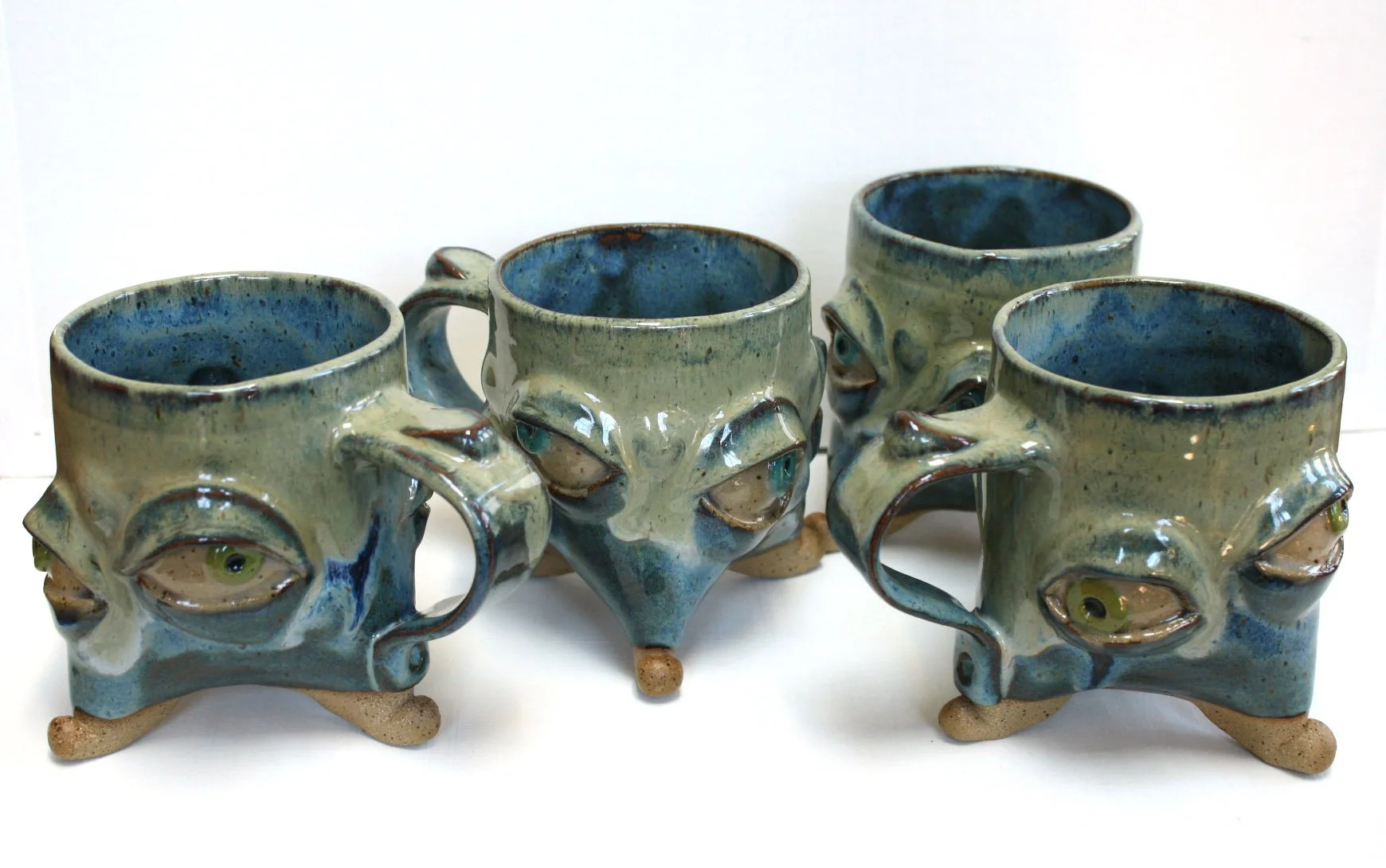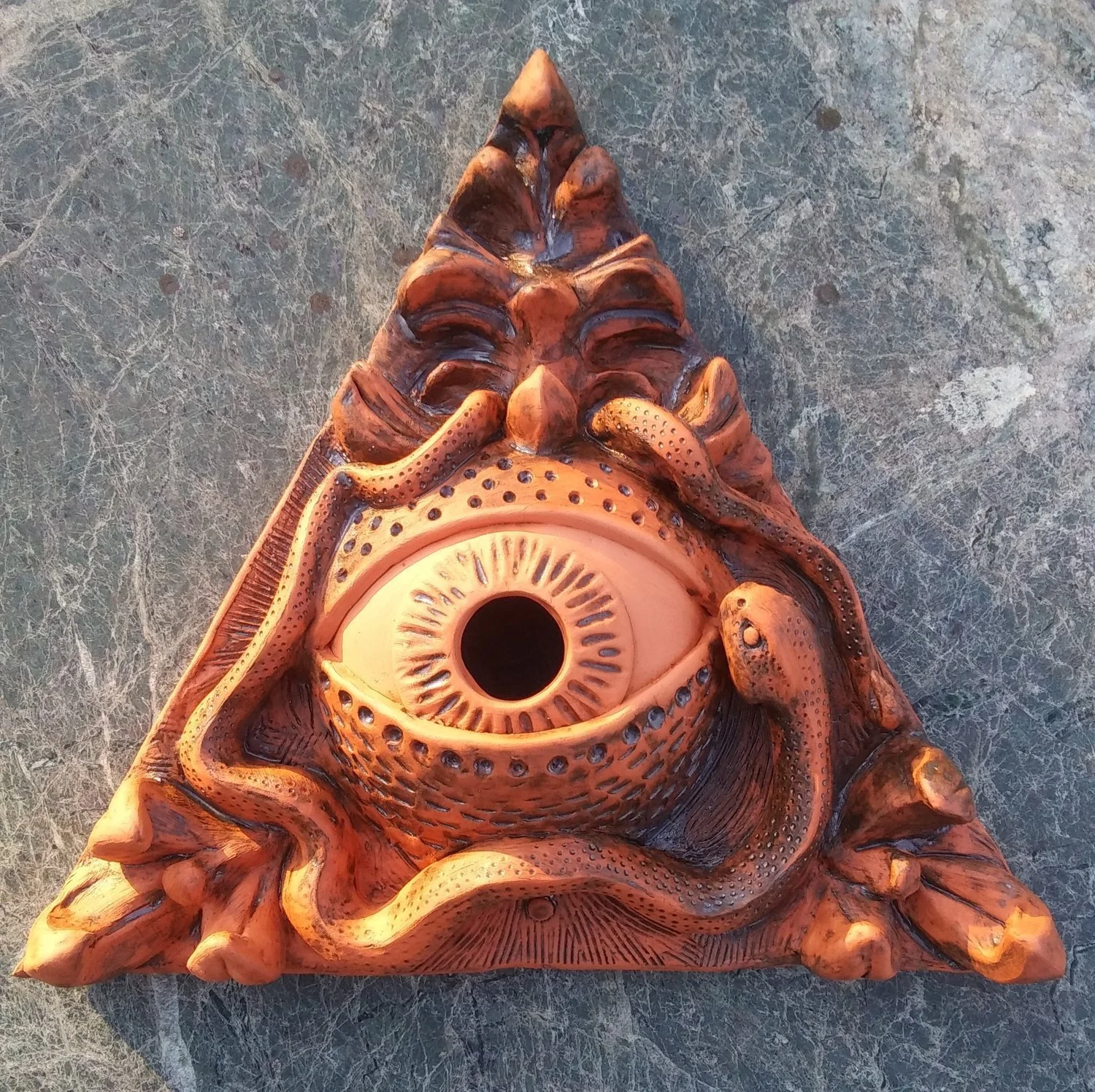Back in 2016 when I started my pottery journey, one of the very first things I made was a mug with eyes on it. I have no idea why. For some reason I just thought it would be fun and I always follow my nose when I think making a thing would be fun to do.
Not long afterwards, I started making Monsterpot protoypes. These first pots were a lot simpler, with less personality and facial expression. I was still learning how and when to handle clay, so these pots were also cruder in form, had thicker walls, and had less finesse. I was also learning how to best cut the lids, an operation best done on very leatherhard clay in order to make the lid perfectly fitted.
When I had made a batch of these prototypes, I gave one to Elva, my pottery mentor who gifted me my studio and equipment. Her remarks on seeing the ware were that I was making pottery in the tradition of “face jugs.” What was that? Being the studious, nerdy type that I am, I had to look it up. Cursory research revealed that my pottery’s part of a very large and long conversation.
In the American colonial era, Black slaves brought the Nkisi face pottery from their African traditions to the States. These vessels were and are used in spiritual practices, healing rituals, and ancestral worship. Each cultural group has its own unique expression of the vessel. Potters with training in the old European traditions also made face jugs in the early US.
Pottery’s durability has allowed archeologists to unearth examples of functional jars with faces from all over the world. There are funerary face jars from the Philippines and on another continent, the ancient Aztec, Olmec, and Moche in South America had their own unique styles and uses.
Face jugs have survived from the ancient Bronze Age and have been found in regions in China (Quija). And in Ancient Greece, the kylix cup was a typical item used as an apotropaic object to ward off evil. Artisans would paint large eyes on a vessel which were thought to confer protection against evil for the bearer of the vessel.
Eyeball mugs,4”, stoneware with studio glazes. 2023.
The Greek culture got their ideas about gods and spirits from the even more ancient Mithraic culture (Anatolia/Turkey), who believed in many-eyed gods and spirits. “Biblically accurate” angels is an idea that idea comes from the belief that the Sun god was pulled across the heavens in a chariot / wheels with many eyes. These concepts of the supernatural predate Science and inform the archaic doctrinal systems of the Jews and the ancient Egyptian religion of Ra, the Sun god.
Apotropaion with Serpent, 12”, terra cotta with copper washes. 2020.
My bit of online research made me aware of the cultural traditions that have informed my subconscious. My Monsterpots and eyed-pottery don’t exist in a cultural vacuum— no Art does. Knowing this makes me grateful to be a part of this “conversation” in history and to be carrying it forward in a small way.
Ophanim Moonpot, 7”, stoneware with studio glaze. 2022.



